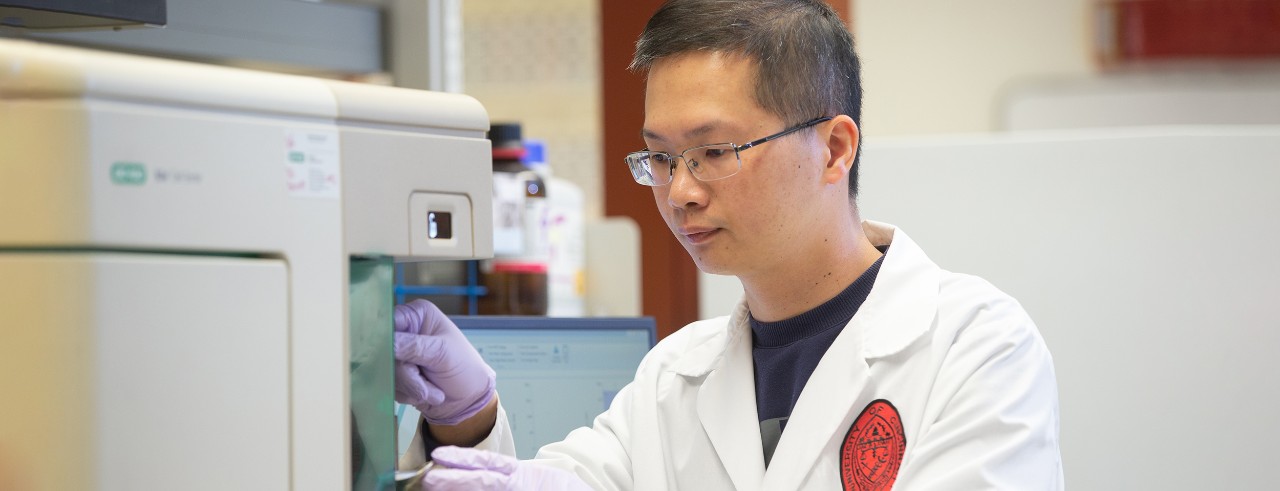
UC researchers developing method to repair hearts
Research could allow cells to repair themselves following a heart attack
The regeneration and repair of cells that have been damaged in heart attacks could be possible in the future thanks to research at the University of Cincinnati.
When a person suffers a heart attack, also called a myocardial infarction, millions of heart muscle cells are starved of oxygen and die. Once the cells in the heart die, there’s no natural system in the human body to replace them.
Yigang Wang, MD, director of the regenerative medicine division in UC's College of Medicine, is leading the development of a technique using something called a cell patch that could regenerate cells following a heart attack.
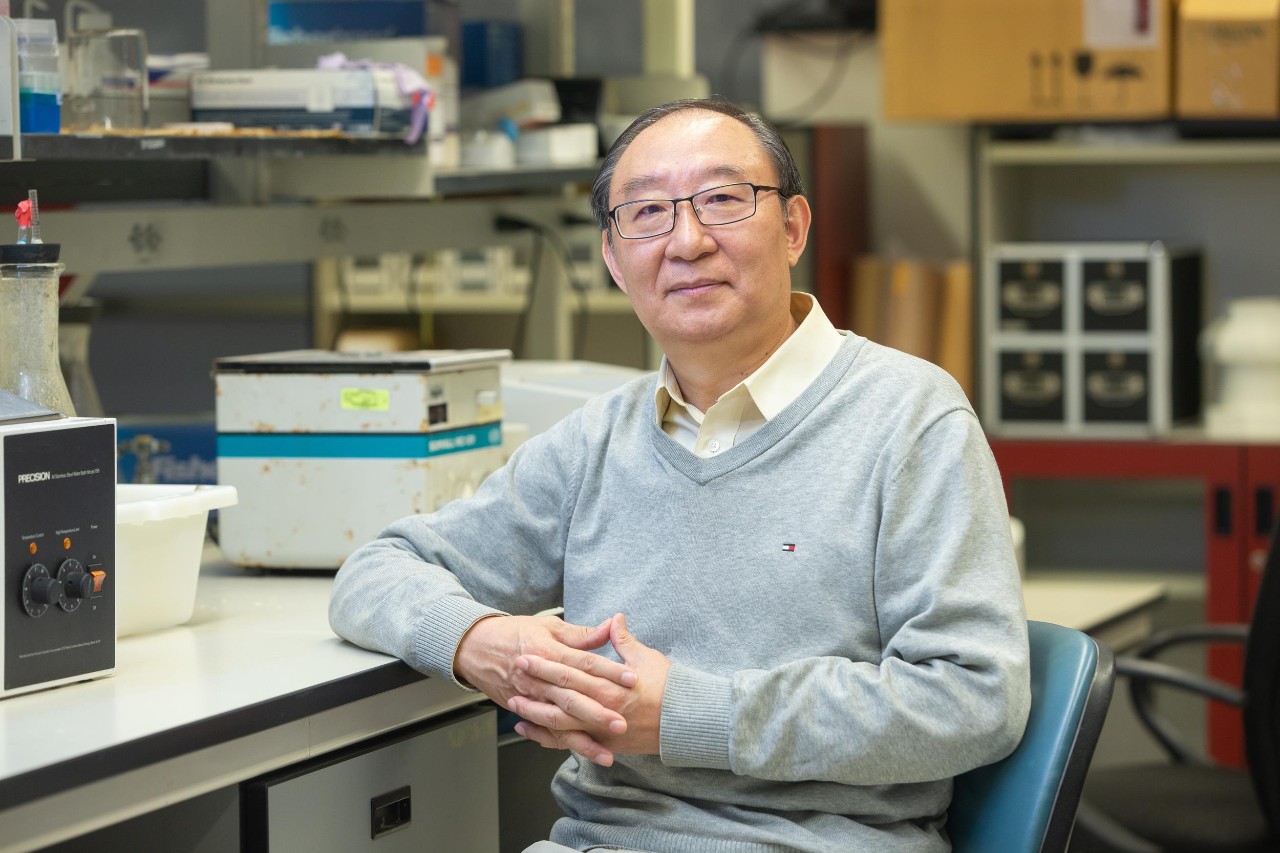
Yigang Wang, MD, a professor in the University of Cincinnati College of Medicine, has developed a technology that regenerates and repairs heart cells. Photo/Andrew Higley/UC Marketing + Brand
A cell patch is a lab-grown patch of muscle that would be affixed to the damaged area of the heart following a heart attack. The patch would replace the damaged cells and allow the heart to repair itself.
“The problem with the current paradigm is that there’s really not much that they can do except treat your symptoms,” said Christian Paul, a research assistant in Wang’s lab. “Treating your symptoms isn’t going to repair anything.”
Within the heart are cells called cardiomyocytes, which are responsible for the beating and contraction of the heart. During a heart attack, those cells can be starved of oxygen and die.
When cardiomyocytes die, they lose their ability to contract and pump blood.
“After a heart attack, those original cells are lost or become fibroblasts,” Wang said. “Then we could convert them to the original cells. That would be ideal to repair a myocardial infarction.”
Wang’s research is in the early stages, having done experiments in cell dishes and small animal models that have shown promise. In the future, breakthroughs that have been developed in the lab could help people avoid open heart surgery and receive better care.
If humans could regenerate the scarred area of the damaged heart into viable heart cells, less invasive procedures would be needed.
“Our method, if in the future it could be used in the clinic, would be revolutionary,” Wang said.
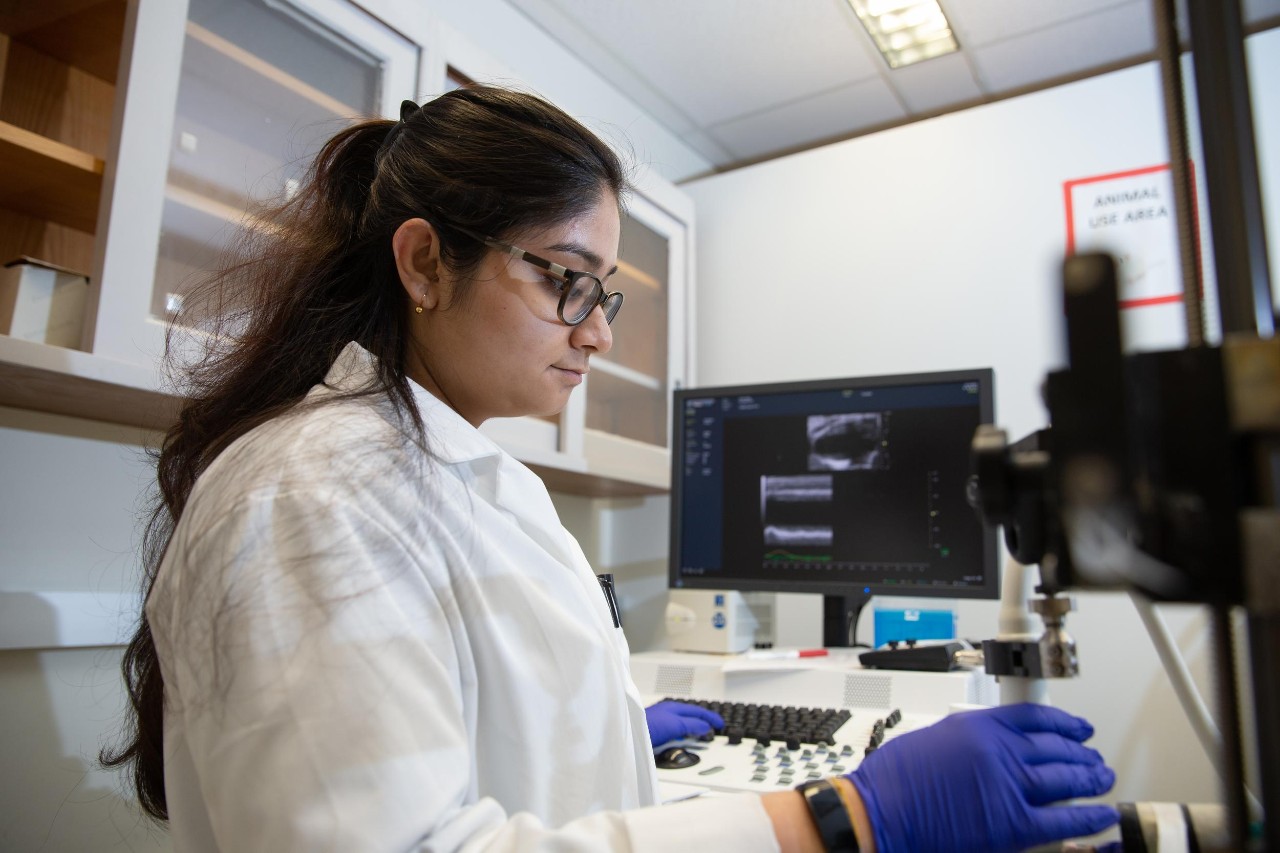
Suchandrima Dutta, a graduate assistant, works in the lab of Yigang Wang, MD, a professor in the University of Cincinnati College of Medicine, who has developed a technology that regenerates and repairs heart cells. Photo/Andrew Higley/UC Marketing + Brand
The cell patch, which Wang likened to a sandwich with multiple layers of cells, would include cardiomyocytes, fibroblasts, smooth cells and endothelial cells.
Fibroblasts are cells that contribute to the formation of connective tissue. They support the cells around them but can’t pump blood.
Endothelial and smooth cells form new blood vessels, delivering nutrients to the damaged tissue, and remove waste. While the researchers at UC and worldwide have worked to develop cell patches, and been hopeful of their potential, there have been impediments to making cell patches a viable treatment.
“Many cells, whether you inject them or put a cell patch on it, after a week, 98% of the cells die,” Wang said.
To overcome these challenges, the UC researchers have developed new techniques and products.
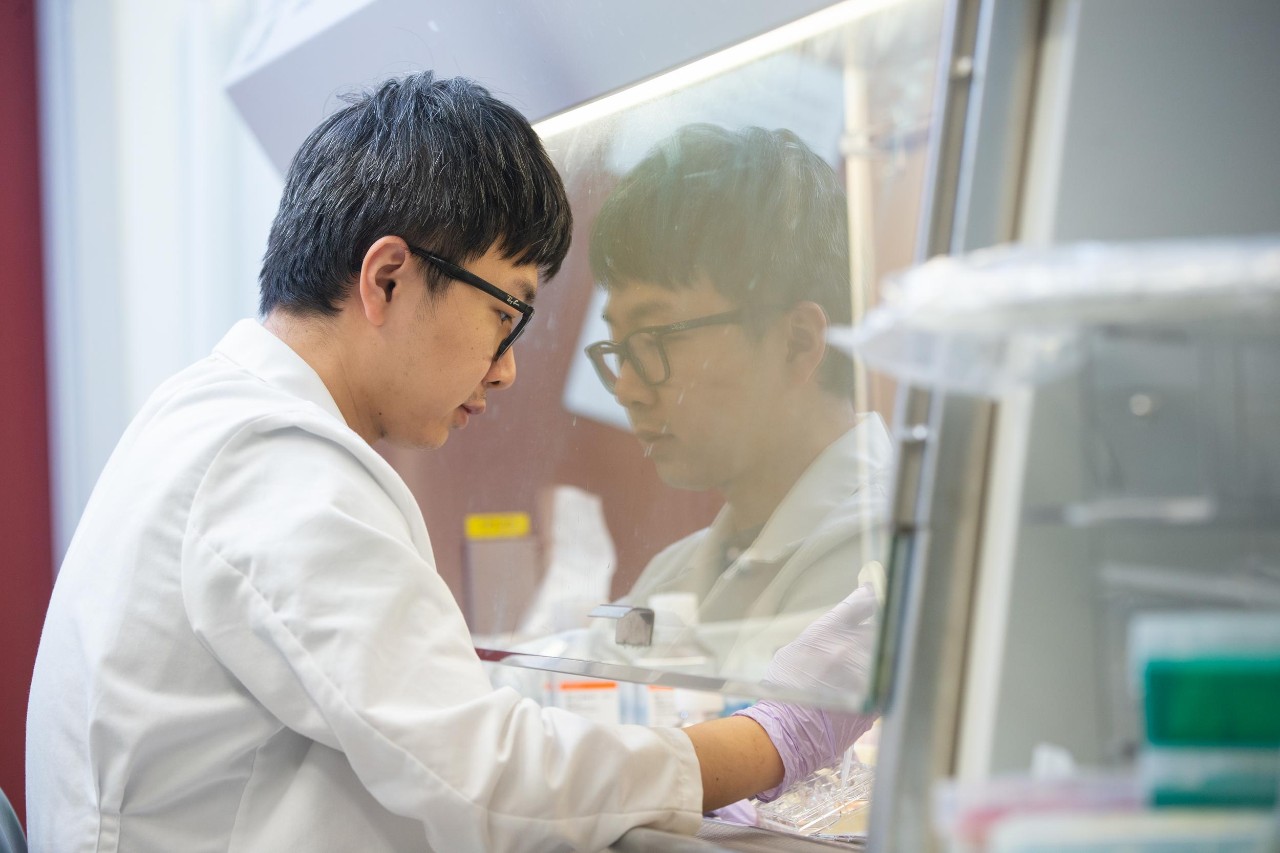
Xingyu He, a postdoctoral research fellow, works in the lab of Yigang Wang, MD, a professor in the University of Cincinnati College of Medicine, who has developed a technology that regenerates and repairs heart cells. Photo/Andrew Higley/UC Marketing + Brand
To create new cardiomyocytes, the researchers use stem cells that are derived from skin or blood cells and reprogrammed into an embryonic-like state that allows the development of any type of human cell needed. The UC researchers have developed ways to make the cells mature quicker.
Wang and his team used CRISPR (Clustered Regularly Interspaced Short Palindromic Repeats) technology — a genome editing system — to alter genes.
By activating reprogramming genes in the body, their new approach turns heart scar tissue into cardiomyocytes. Also, by inhibiting a certain gene, these cells can continue to multiply, and the damaged cells can rejuvenate.
Additionally, they created a new hydrogel. The hydrogel, which Paul compared to a glue, attaches the cell patch to the heart.
The hydrogel developed at UC would introduce oxygen and growth factors, creating the best possible environment for cells to develop.
The UC team has patented its new products and techniques with the help of the staff at UC’s Tech Transfer team at the 1819 Innovation Hub, which has given them more time to focus on their work.
“They’ve been awesome,” Paul said. “Most of the paperwork and administrative aspects, they’ve taken care of, and they’ve asked us for the basic information and taken it from there.”
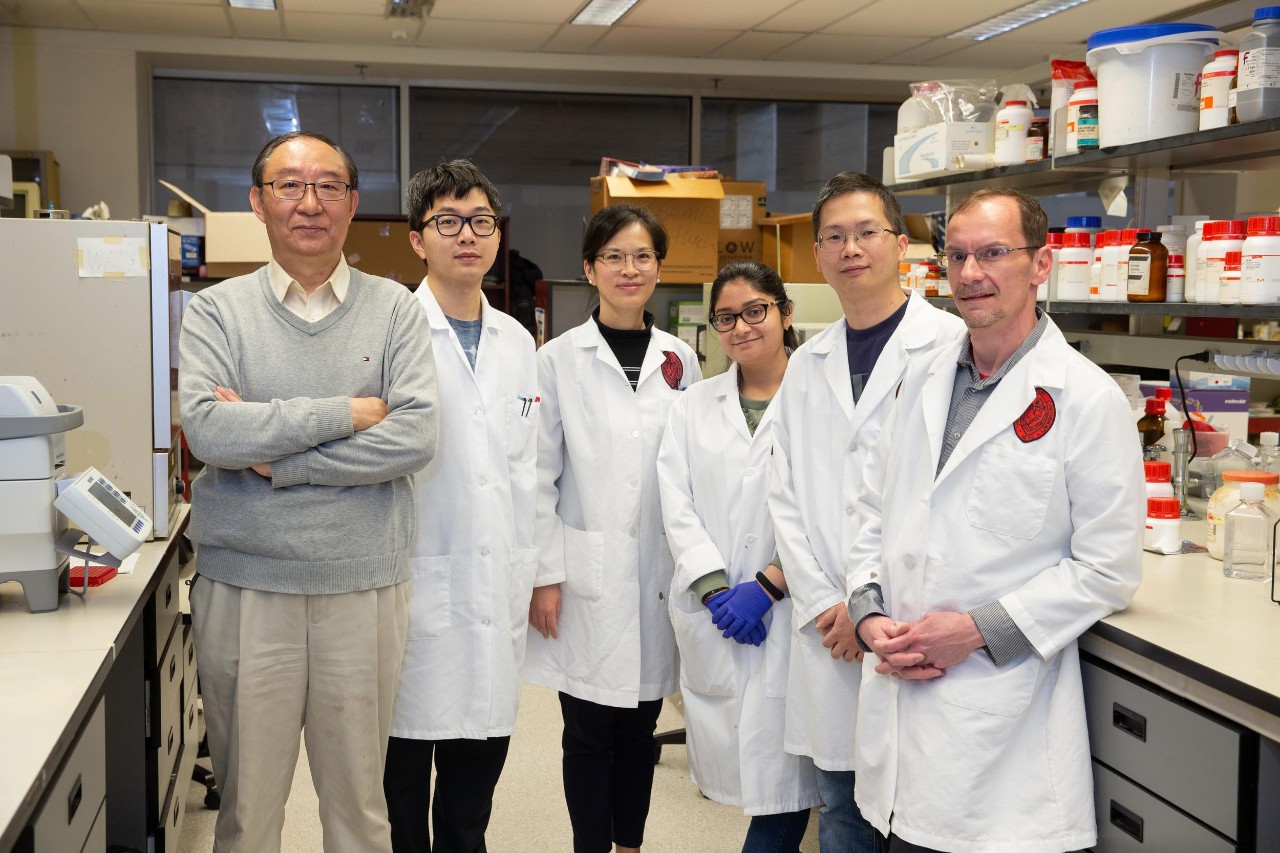
Yigang Wang, MD, a professor in the University of Cincinnati College of Medicine, has developed a technology that regenerates and repairs heart cells. Pictured left to right are, Wang; Xingyu He, a postdoctoral research fellow; Wei Huang, a research scientist; Suchandrima Dutta, a graduate assistant; Jialiang Liang, a research assistant professor; and Christian Paul, a research assistant. Photo/Andrew Higley/UC Marketing + Brand
Featured image at top: Jialiang Liang, a research assistant professor, works in the lab of Yigang Wang, MD, a professor in the University of Cincinnati College of Medicine, who has developed a technology that regenerates and repairs heart cells. Photo/Andrew Higley/UC Marketing + Brand
About the Cincinnati Innovation District
The Cincinnati Innovation District is a unique and thriving ecosystem that attracts, produces, retains and develops talent by co-locating and collaborating with organizations.
Unveiled in 2020 by Ohio Gov. Mike DeWine and Lt. Gov. Jon Husted along with JobsOhio and innovation district leadership, the district envelops myriad innovation assets and access to some of the world’s leading academic and research centers, organizations and talent pools.
Powered by the University of Cincinnati, the CID includes the world-renowned Cincinnati Children’s Hospital Medical Center and other national research centers. The district’s mission is to become a globally recognized talent hub and lead a transformational movement. The combination of industry engagement, unique experiential platforms and accessible research expertise — working at the pace of change — will become a model nationwide.
For more information on the Cincinnati Innovation District, visit www.cincyid.com.
Related Stories
UC researcher receives grant to develop new breast cancer treatment
October 7, 2022
A University of Cincinnati Venture Lab-backed startup is developing a breast cancer treatment that may be more effective with fewer side effects thanks to RNA nanotechnology that is similar to what was used to produce COVID-19 vaccines.
UC research aims to prevent skin cancer while getting a tan
April 6, 2023
Research from the University of Cincinnati could allow people to get a healthy tan, avoid wrinkles and protect themselves from skin cancer, WJXT in Jacksonville, Florida, reported.
‘Goldilocks zone’: UC researchers seek to improve emergency care
September 12, 2022
Technology from a University of Cincinnati Venture Lab-backed startup could save lives by allowing emergency medical personnel to accurately monitor the life-saving treatment they provide.
